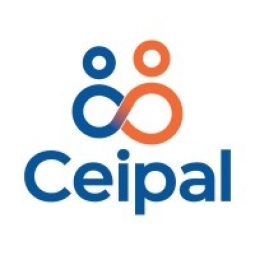Technology Category
- Platform as a Service (PaaS) - Application Development Platforms
Applicable Industries
- Finance & Insurance
- Healthcare & Hospitals
Applicable Functions
- Sales & Marketing
Use Cases
- Leasing Finance Automation
About The Customer
Voca is a leading relationship organization based in Rochester, MN, dedicated to pairing people with exceptional companies. Founded in 2005, Voca places talent in various industries including healthcare, professional, legal, financial, travel, and technology. With over 20 recruiters and 1 million candidates in their database, Voca was planning to expand further into the healthcare industry. However, they were facing significant challenges with their existing ATS provider, which was expensive, unresponsive, and slow to modernize.
The Challenge
Voca, a leading relationship organization based in Rochester, MN, was facing significant challenges with their existing Applicant Tracking System (ATS) provider. With over 20 recruiters and 1 million candidates in their database, Voca needed an efficient ATS platform to support their growth and expansion into the healthcare industry. However, their existing provider was not meeting their expectations due to three major issues. Firstly, the platform was too expensive for the services it provided, costing $170 per seat and requiring additional costs for add-ons, resulting in an extra $20,000 per year in software costs. Secondly, the customer service was unresponsive, failing to address any of Voca's service tickets over six years. Lastly, the platform was not modernizing quickly enough to keep up with the competition, resulting in slower innovations that did not meet Voca's needs.
The Solution
Voca decided to invest in a more cost-effective and responsive ATS. They prioritized two main features: end-to-end recruitment solutions and responsive customer service. After evaluating the entire ATS market, they unanimously chose CEIPAL as their preferred platform. CEIPAL offered feature-rich performance, eliminating the need for third-party recruitment solutions and saving Voca significant overhead costs. The platform was flexible and configurable, with an intuitive user interface and the ability to integrate any recruitment solution at no additional cost. CEIPAL also provided responsive customer service with a dedicated account manager available at any hour. Most importantly, CEIPAL offered significant cost savings, allowing Voca to increase the number of users while saving over $40,000 on overhead costs.
Operational Impact
Quantitative Benefit

Case Study missing?
Start adding your own!
Register with your work email and create a new case study profile for your business.
Related Case Studies.

Case Study
Hospital Inventory Management
The hospital supply chain team is responsible for ensuring that the right medical supplies are readily available to clinicians when and where needed, and to do so in the most efficient manner possible. However, many of the systems and processes in use at the cancer center for supply chain management were not best suited to support these goals. Barcoding technology, a commonly used method for inventory management of medical supplies, is labor intensive, time consuming, does not provide real-time visibility into inventory levels and can be prone to error. Consequently, the lack of accurate and real-time visibility into inventory levels across multiple supply rooms in multiple hospital facilities creates additional inefficiency in the system causing over-ordering, hoarding, and wasted supplies. Other sources of waste and cost were also identified as candidates for improvement. Existing systems and processes did not provide adequate security for high-cost inventory within the hospital, which was another driver of cost. A lack of visibility into expiration dates for supplies resulted in supplies being wasted due to past expiry dates. Storage of supplies was also a key consideration given the location of the cancer center’s facilities in a dense urban setting, where space is always at a premium. In order to address the challenges outlined above, the hospital sought a solution that would provide real-time inventory information with high levels of accuracy, reduce the level of manual effort required and enable data driven decision making to ensure that the right supplies were readily available to clinicians in the right location at the right time.

Case Study
Gas Pipeline Monitoring System for Hospitals
This system integrator focuses on providing centralized gas pipeline monitoring systems for hospitals. The service they provide makes it possible for hospitals to reduce both maintenance and labor costs. Since hospitals may not have an existing network suitable for this type of system, GPRS communication provides an easy and ready-to-use solution for remote, distributed monitoring systems System Requirements - GPRS communication - Seamless connection with SCADA software - Simple, front-end control capability - Expandable I/O channels - Combine AI, DI, and DO channels

Case Study
Driving Digital Transformations for Vitro Diagnostic Medical Devices
Diagnostic devices play a vital role in helping to improve healthcare delivery. In fact, an estimated 60 percent of the world’s medical decisions are made with support from in vitrodiagnostics (IVD) solutions, such as those provided by Roche Diagnostics, an industry leader. As the demand for medical diagnostic services grows rapidly in hospitals and clinics across China, so does the market for IVD solutions. In addition, the typically high cost of these diagnostic devices means that comprehensive post-sales services are needed. Wanteed to improve three portions of thr IVD:1. Remotely monitor and manage IVD devices as fixed assets.2. Optimizing device availability with predictive maintenance.3. Recommending the best IVD solution for a customer’s needs.

Case Study
HaemoCloud Global Blood Management System
1) Deliver a connected digital product system to protect and increase the differentiated value of Haemonetics blood and plasma solutions. 2) Improve patient outcomes by increasing the efficiency of blood supply flows. 3) Navigate and satisfy a complex web of global regulatory compliance requirements. 4) Reduce costly and labor-intensive maintenance procedures.

Case Study
Cloud-based healthcare solution for Royal Philips
Royal Philips wanted to launch its cloud-based healthcare solution HealthSuite Digital Platform in China to deliver services to help cope with challenges related to urbanization and population growth. Philips wanted to achieve this goal by combining mobile, cloud computing and big data technologies. To bring this platform and product to market, Philips required cloud computing and local technical service capabilities in China, in addition to a flexible IT infrastructure that could handle user requests.








